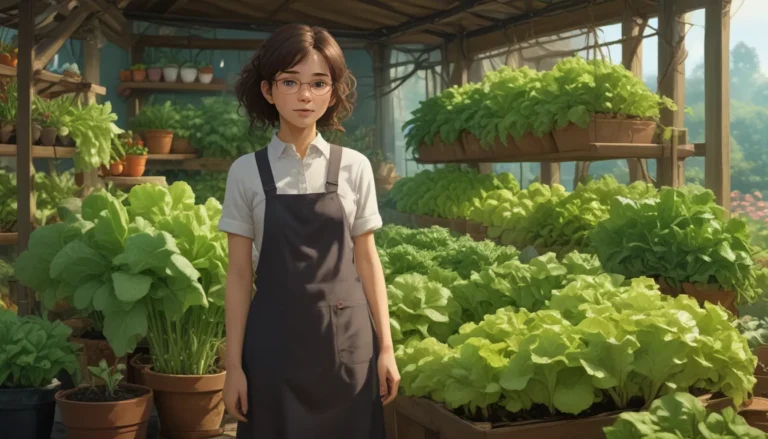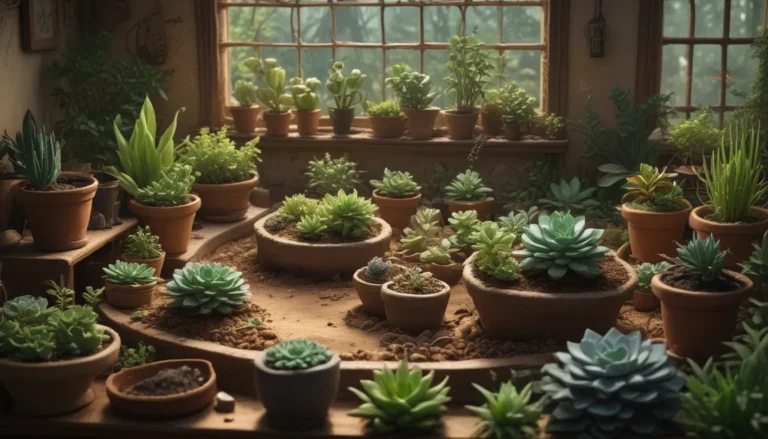Comprehensive Guide to Growing Succulents in a Greenhouse

Growing succulents in a greenhouse can be a rewarding experience, whether you’re new to gardening or a seasoned indoor plant enthusiast. The controlled environment of a greenhouse provides the perfect conditions for succulents to thrive. If you’re looking to expand your succulent collection or provide a cozy winter home for your plants, here are some tips and information to help you succeed.
What You’ll Learn
- Types of Succulents to Grow in a Greenhouse
- Tips for Growing
- Exposure
- Temperature
- Humidity and Air Circulation
- Pots and Soil
- Placement
- Overwintering
- Propagating
Types of Succulents to Grow in a Greenhouse
A greenhouse is an ideal environment for growing a variety of succulent plants. While some succulents can survive outdoors in harsh conditions, many tender varieties benefit from the protection and warmth of a greenhouse. Consider the following when selecting succulents for your greenhouse:
Suitable for Greenhouse Growing:
– Kalanchoe
– Aloe
– Haworthia
– Living stones
Considerations When Choosing Plants:
– Size of mature plants
– Trailing varieties for vertical space
– Humidity preferences of different species
Tips for Growing
Exposure
Proper sunlight exposure is essential for succulents in a greenhouse. While they need at least six hours of bright, indirect light daily, direct sunlight can harm their leaves. Consider shaded areas or supplemental light if needed.
Temperature
Maintaining a temperature range of 70 to 75°F during the day and slightly cooler at night is ideal for most succulents. Monitor the temperature and provide heating or cooling as necessary to prevent extreme fluctuations.
Humidity and Air Circulation
Succulents thrive in low to average humidity levels of around 40-50%. Ensure proper air circulation by spacing plants apart and avoiding excess moisture buildup. Well-draining soil and pots with drainage holes are essential to prevent root rot.
Pots and Soil
Use porous pots like unglazed terra cotta with well-draining soil for succulents. Avoid using garden soil, as it can lead to root rot. Water thoroughly when the soil is dry, allowing excess water to drain away to prevent waterlogged roots.
Placement
Arrange your succulents in a way that provides adequate light and space for each plant. Avoiding water drips on leaves, blocking light, or overcrowding is essential. Place pots on shelves or stands to avoid the cold ground during the winter months.
Overwintering
If you live in colder climates, a greenhouse can be a lifesaver for overwintering frost-tender succulents. Research the USDA Hardiness Zones for your plants and ensure proper heating and light levels to sustain them through the winter. Monitor temperatures, humidity levels, and air circulation to keep your plants healthy.
Propagating
Growing new succulents from cuttings or leaves is an exciting process that a greenhouse can enhance. With the right light and temperature conditions, a greenhouse provides an ideal environment for root formation and propagation. Experiment with propagating different succulent varieties to expand your collection.
Home Sweet Home
Whether you’re a beginner succulent grower or an experienced indoor gardener, a greenhouse can offer new opportunities for plant care and propagation. Share your greenhouse succulent growing experiences or questions in the comments below. For more greenhouse gardening tips, explore our other guides on growing herbs, managing pests, and cultivating fruit trees.
Growing succulents in a greenhouse opens up a world of possibilities for plant enthusiasts. With the right care and attention to detail, you can create a thriving succulent oasis in your own backyard. Experiment with different varieties, propagation techniques, and greenhouse setups to discover what works best for you and your plants. Happy gardening!





